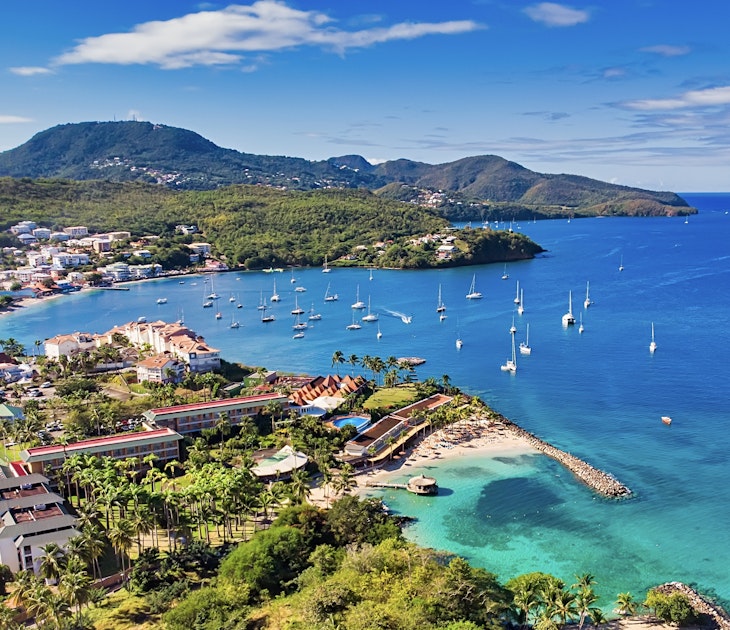
Rio de Janeiro’s beaches now safe for swimming after decades of pollution

Oct 6, 2023 • 4 min read

New data shows that the water quality at Rio’s beaches is the highest it’s been in many years © Buena Vista Images / Getty Images
Rio de Janeiro’s beaches rank among the world’s most beautiful. Glittering water kisses Brazil’s coast beneath the mountains of Guanabara Bay, as Christ the Redeemer blesses the scene from above. Yet pollution has degraded the ecosystem for decades, making the water unsafe for swimming.
Thanks to recent clean-up efforts, that’s starting to change.
In late September, water samples analyzed by Rio de Janeiro’s State Environment Institute (INEA) showed that all of the capital city’s beaches were temporarily suitable for swimmers – the first time since the INEA began posting bathing bulletins in 2007.
Biologist Alex Turra, professor at the Oceanographic Institute of the University of São Paulo, cites two reasons for cleaner water. The most immediate is the lack of rainfall this September, which has prevented street pollution from draining into the sea. The second is local sanitation efforts, spearheaded by Águas do Rio – one of three private companies that began cleaning up Rio’s act in 2021.
The news is a relief for locals, who’ve seen human sewage and industrial waste transform miles of pristine coastline into toxic landfills, particularly the water in Guanabara Bay.
Dr Turra believes Águas do Rio’s efforts provide reason for hope. With private companies at the helm, “there’s a very good possibility to have continuous improvement in water quality,” he says – and a chance that Brazilians will eventually win back their beaches.

A brief history of Rio de Janeiro’s waterfront
When Portuguese colonizers first sailed into present-day Rio de Janeiro in 1502, they stumbled upon a lush Eden. Indigenous communities lived in harmony with the landscape. Colorful sea creatures swam near the shore.
As the city’s population exploded over the next 500 years, Indigenous life faded away. Some Indigenous place names remain – including Guanabara, meaning “bosom of the sea” – but the seaside city’s ecosystem is otherwise a shell of its former self.
When Rio hosted the 2016 Summer Olympics, athletes reported seeing dead dogs and cats, washing machines and even cars floating in Guanabara Bay. An investigation by the Associated Press found dangerously high levels of human feces along the coast.
In addition, a canal leading to Guanabara Bay has become a graveyard for ships, with sunken vessels leaking oil and other toxic chemicals.
“There is no proper system to collect and treat Rio’s sewage,” says Dr Turra. He estimates that roughly 30% of wastewater goes untreated, turning rivers, streams and bays into a virologist’s nightmare.
“The biggest problem here is the continuity of sanitation policies,” he says. Attempts by the government to fix sewage problems regularly fail. The short-term interests of corrupt officials historically overlook necessary long-term goals to clean waterways.

Rio’s clean-water revolution
In 2021, after years of broken promises, state authorities privatized Rio’s water-and-sewage utility service. Now, Águas do Rio will oversee the service for 35 years in 27 cities within the state, including a large portion of the capital.
While privatization has plenty of critics, Dr Turra thinks Rio will benefit from the company’s consistency. “With a private company assuming a 35-year contract, we’ll be able to have a long-term investment in sanitation,” he says.
In the past two years, Águas do Rio has focused on fixing existing water and sewage infrastructure. This includes unblocking a pipe designed to prevent more than 40 million liters of sewage-contaminated water from reaching the city’s beaches daily.
“It’s also worth mentioning that we achieved an accomplishment on the island of Paquetá, a small paradise in the middle of Guanabara Bay,” says Alexandre Bianchini, president of Águas do Rio. “After 10 months of restoration work on the island’s networks, 100% of its sewage is now collected and treated.”
September’s clear waters show that “the measures we have implemented over the past two years are bearing fruit,” says Bianchini.
Still, locals have reason for skepticism. The city’s unsuccessful clean-up plans stretch back decades, having already flushed billions of wasted reais down the drain.
And success can’t be won by private companies alone. Águas do Rio might make smart decisions, but that won’t solve such underlying (and intractable) problems as poverty. In Rio’s overcrowded favelas, home to approximately 1.5 million people, there’s little access to efficient sewage systems and trash disposals.
“We need to bring dignity to the people who live in Rio,” says Dr Turra, “and that means having proper places to collect, treat, and dispose of waste.”

Visiting Rio’s beaches
Despite Rio’s pollution plague, the shoreline remains as alluring as ever.
“My connection with the sea is so strong that it is one of the reasons that made me work in basic sanitation,” says Bianchini. “Swimming is my passion, and my favorite beach to practice this sport is Copacabana.” He’s currently training for a freestyle race at Copacabana Beach in 2024.
Whenever Dr Turra visits Rio, he beelines for Ipanema Beach to body surf. “The waves are fantastic and the scenery is amazing,” he says. He also loves remote reserves in the far south, like Recreio dos Bandeirantes, a surfing haunt with sugar-white sands.
While he avoids Guanabara Bay’s inner beaches, Dr Turra suggests visiting the Área de Proteção Ambiental de Guapi-Mirim. This mangrove-packed sanctuary protects endangered local species – a far cry from the pollution seen elsewhere along the shore.
“People need to know that we have this treasure in Guanabara Bay,” he says. “The bay is alive. There’s a possibility for a future here.”
Explore related stories



 BeachesThe best road trips in Brazil take you to mountains, jungles and stunning beaches
BeachesThe best road trips in Brazil take you to mountains, jungles and stunning beachesSep 20, 2023 • 9 min read






